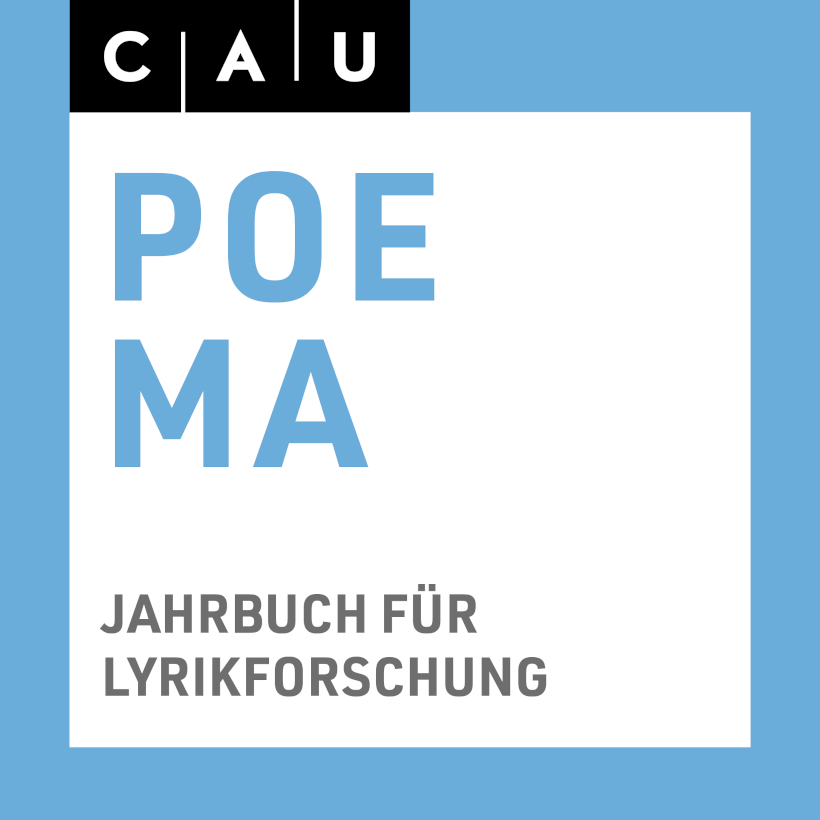Skulpturgedichte
Skulpturgedichte entstehen vor allem im Umfeld Konkreter Poesie seit den 1960er Jahren, begleitet von theoretischen Reflexionen, die wichtige Perspektiven für ihre Deutung und Erforschung eröffnen. Als konstitutive Dimensionen skulptural-poetischer Gestaltung erscheinen Sprachlichkeit, Schriftlichkeit, Räumlichkeit und Kinetik des Gedichts, die Materialität und Architektur der skulpturalen Gestalt, aber auch deren implizite Semantiken, ihre symbolischen oder metaphorischen Valeurs. Ausgehend von diesen Aspekten des Konkreten Skulpturgedichts lassen sich aber auch andere Beispiele skulpturaler Lyrik in den Blick nehmen: Poeme in Gestalt von Buchskulpturen, skulptural erscheinende Gedichte, plastisch materialisierte Graphien, Inschrift-Poeme von konstitutiver Skulpturalität. Phänomen- und Forschungsfeld des Skulpturgedichts werden in vorliegendem Beitrag im Ausgang von vier Beispielen skizziert. Zwei davon gehören zur Konkreten Poesie; für sie sind Kernkonzepte Konkreter Poetik, wie etwa das ›one word poem‹, konstitutiv, und beide haben bezogen auf das Oeuvre ihrer Schöpfer (Ian Hamilton Finlay, Heinz Gappmayr) programmatisch-exemplarische Bedeutung. Die zwei anderen Beispiele (Margaret Kaufman/Claire de Vliet, Michel Butor/Pierre Leloup) sind ebenfalls skulptural gestaltete Poeme, auch wenn sie unter anderen ästhetischen Vorzeichen stehen, und sie haben jeweils eine programmatische Bedeutung innerhalb des Oeuvres, zu dem sie gehören. Ausgehend von den Beispielen erfolgt ein Aufriss der theoretischen Fragen und Deutungsperspektiven, die Skulpturgedichte eröffnen.
Since the 1960s, sculpture poems have emerged above all in the environment of concrete poetry, accompanied by theoretical reflections that open up important perspectives for interpreting and exploring them. The linguistic, written, spatial and kinetic dimensions of the poem, together with the materiality and architecture of the sculptural form, as well as its implicit semantics and its symbolic or metaphorical valeurs, appear as constitutive dimensions of sculptural-poetic design. Based on these aspects of the Concrete Sculpture Poem, other examples of sculptural poetry can also be examined: e.g. poems in the form of book sculptures, poems that appear sculptural, sculpturally materialised letters and inscription poems involving constitutive sculpturality. An outline of the phenomena and research field relating to sculpture poems is given in this article on the basis of four examples. Of these, two belong to Concrete Poetry; core concepts of Concrete Poetics, such as the ›one word poem‹, play a constitutive role in them and they both have programmatic significance within the oeuvre of their creators (Ian Hamilton Finlay, Heinz Gappmayr). The two other examples (Margaret Kaufman/Claire de Vliet, Michel Butor/Pierre Leloup) are also sculpturally designed poems, albeit under different aesthetic auspices, and they both have a programmatic significance within the oeuvre to which they belong. These examples will be used to outline the theoretical questions and interpretative perspectives that sculpture poems open up.
Vorschau
Rechte
Nutzung und Vervielfältigung:
Bitte beachten Sie, dass einzelne Bestandteile der Publikation anderweitigen Lizenz- bzw. urheberrechtlichen Bedingungen unterliegen können.


